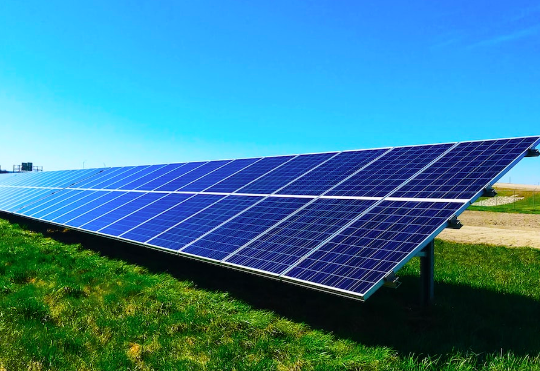When it comes to GST the most major and talked-about reform has been e-invoicing. There were industry-specific billing practices. Regardless of the varied techniques for creating invoices, the general taxpayers enthusiastically accepted the unified approach of e-invoicing.
Let’s go ahead with the meaning of a GST invoice.
GST Invoice is a commercial document, invoice, or bill that contains quantity, cost, and tax amount-related information for products or services given by the seller to the customer. It’s the same as other invoices used by businesses prior to the establishment of the GST Act.
The Goods and Services Tax (GST) was introduced by the Indian government in 2017 to help Indian taxpayers. Because the previous indirect tax regime was difficult for taxpayers to navigate.
Since the implementation of GST in 2017, the GST Council and the government have taken numerous initiatives to ensure that taxpayers are not burdened by the new tax regime. As a result, GST Invoices and E-Invoicing are important for enterprises.
Let’s have a look at E-Invoicing in the context of GST and its implications:
Introduction and working of E-invoicing in India.
The first committee was constituted in May 2019 to investigate the usability of E-Invoicing and to draught an e-invoicing implementation strategy for India, taking global implementations into account.
Since the committee’s recommendations, several iterations of E-Invoicing Specifications have been published, and the E-Invoice Schema was finally issued in January 2020. The requirement was set to go active on April 1st, 2020.
The mandate was pushed back to October 1, 2020, during the 39th meeting of the GST Council on March 14, 2020. The mandate went operational in stages on October 1st, 2020.
GST Benefits of E-Invoicing
Even before the GST period, the government was trying to make a stand against tax emanation and fraud through the use of false invoices. In India, e-invoicing is being proposed to end this by requiring authorization of all invoices through the government portal.
Real-time invoice reporting reduces the likelihood of fraudulent alterations or adjustments in the future. The deployment of e-invoicing under GST will benefit taxpayers in addition to preventing tax leakage.
For all kind of GST filings, you only need to report the invoicing details just once.
E-way generation in real-time Part A and Part B slips are included in the bill. The standard billing system entails:
Requirement for the creation of an electronic invoice?
E-Invoices are generated in three ways.
Based on AATO (Average Annual Turnover):
The usage of E-Invoices under GST has been phased in across the country, based on a business’s total yearly sales. The first phase took effect on October 1, 2020, for business with a revenue of more than Rs.500 crore.
The second phase commenced on January 1, 2021, for firms with a turnover of more than Rs.100CR. The third phase, which will start on April 1, 2021, would be open to companies with a revenue of Rs 50 crore or more.
Based on the fiscal year:
AATO in any foregoing Financial Year from 2017-18 onwards must be given thought to determine the relevancy of the E-Invoicing order, according to Not. No. 13/2020, as amended by Not. No. 70/2020 and Not. No. 88/2020.
The GST returns are used to calculate AATO. The GST System has also made it easy to check the applicability on the E-Invoice Portal.
Based on the Entity Type:
Recipients and carriers are unable to generate e-invoices. E-commerce platforms can create GST-compliant e-invoices on behalf of their sellers. E-commerce businesses should be aware of the concept of e-invoicing.
Who does not require the use of an electronic invoice?
According to GST notification No. 13/2020-Central Tax dated March 21, 2020, the following individuals are excluded from generating e-invoices:
Insurance companies, banking companies, financial institutions, and non-banking financial companies (NBFCs) operate in the Greater Toronto Area (GTA).
Passenger transportation service provider.
Paperwork that have to be reported to the GST system as part of the E-Invoicing system
The taxpayers must submit the following documents to the e-invoice system.
- Supplier’s Invoice
- Supplier’s Credit Note
- Supplier’s Debit Note
As a result, E-Invoicing does not require the reporting of Bills of Supply and Delivery Challans/Job Work Challans.
E-Invoicing transactions to be reported
Only B2B (including B2G – Business to Government) transactions are eligible for electronic invoicing.
E-Invoicing covers domestic and international B2B supplies, as well as exports (including deemed exports), supplies to SEZ B2B Reverse Charge Invoices, and supplies through E-commerce Operators.
Applicability of e-invoicing and RCM transactions
If an E-commerce transaction falls under RCM, the transaction is also covered by GST E-invoicing. Along with that, an e-commerce moderator can produce an IRN for the same.
As we can realize, GTA is an RCM undertaking service, but it is currently out of E-invoicing. Despite the fact that SEZ units are exempt from E-invoicing, the SEZ developer is required to generate IRN due to the E-invoice law.
For B2C (Business to Consumer) transactions, e-invoicing is not necessary. The invoices must, however, feature a self-generated QR code for taxpayers having an AATO of more than Rs 500 Cr.
E-Invoicing does not apply to import transactions.
How to prepare an e-invoice for GST?
The taxpayer’s system generates an invoice, which is subsequently transmitted to the Invoice Registration Portal (IRP) for acceptance. The invoice information is equipped with IRPs digital signature and a QR Code, as well as the Invoice Registration Number, once it has been verified (IRN). You can use tools like Lio.io to track all the GST details and invoicing.
Data points required to create an electronic invoice?
The e-invoice schema and e-invoicing template are made use to generate the data points called for constructing an e-invoice.
Details such as customer and supplier information, invoice value, goods or service description, and HSN, taxable value, and tax amounts are all must-have information. Payment-related information, like bank account numbers, payment modes, pre-tax amounts, and other reference document numbers, are optional data fields.
Is the B2C Invoice QR Code related to E-Invoicing?
The availableness of QR codes on B2C invoices was announced at the same time as the availability of E-Invoice notifications, but the two are unrelated. On B2C invoices, taxpayers with an AATO of over Rs 500 crore must include a self-generated QR Code to allow customers to employ simple payment alternatives like scan and pay.
E-invoicing and QR codes for B2C invoices were required to progress towards a digital economy.
An e-invoice recipient should check for?
On e-invoices received from suppliers (to whom the mandate applies), the additional information relating to invoice reference numbers will now be encompassed (IRN).
As a result, recipients of e-invoices must be informed that the obligation applies to their vendor list. Furthermore, receivers must be aware of which paperworks, such as CDNs, DBNs, and invoices, must include the IRN.
Application used to generate a GST E-invoice?
Despite popular belief, an E-invoice under GST can be created with any program or instrument that supports the required e-Invoicing format. Getting the system ready to send and receive invoice data is crucial.
It’s important to keep in mind that invoices will continue to be generated by taxpayers. Taxpayers can create IRN manually or use solutions that can be incorporated into their existing invoicing methods.
However, because there are other responsibilities after IRN generation, such as printing an invoice with the help of a QR code and checking its auto-population in GSTR 1, it is best to choose a system that can handle all of your e-invoicing and GST compliance needs.

Krishna Murthy is the senior publisher at Trickyfinance. Krishna Murthy was one of the brilliant students during his college days. He completed his education in MBA (Master of Business Administration), and he is currently managing the all workload for sharing the best banking information over the internet. The main purpose of starting Tricky Finance is to provide all the precious information related to businesses and the banks to his readers.





